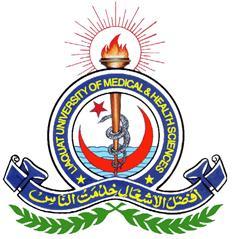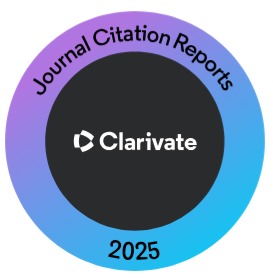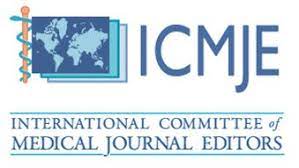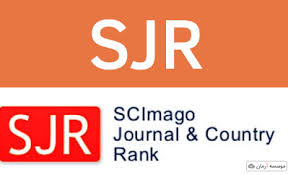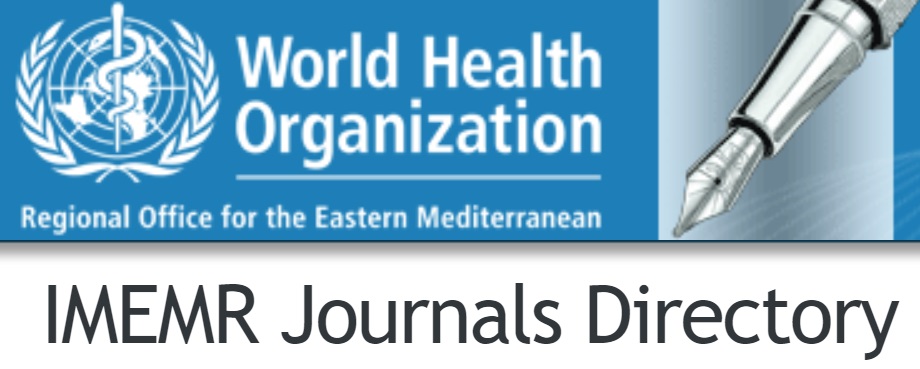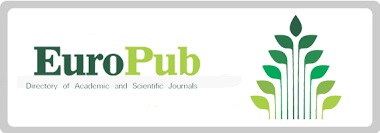Pre-clinical evaluation of Fagonia cretica L. extract against CCl4-induced hepatotoxicity in male Wistar Rats
Keywords:
Hepatoprotective potential, Medicinal plant, Hepatotoxicity, Anti-inflammatory, AntioxidantAbstract
OBJECTIVE: To investigate the hepatoprotective effects of Fagonia cretica L. (F. cretica) extracts against CCl4-induced hepatotoxicity in rats.
METHODOLOGY: The study evaluated the hepatoprotective effects of ethanol and hexane extracts of F. cretica against CCl4-induced liver toxicity in 35 Wistar albino rats divided across five experimental groups. Hepatotoxicity was induced in groups II to V with CCl4, while groups III and IV received plant extracts. Group V was treated with cisplatin, which was used as a standard drug. Alterations in liver damaging and oxidative stress biomarkers were assessed after treatment.
RESULTS: The results showed the hepatoprotective effects of EFC (ethanol extract of F. cretica) and HFC (hexane extract of F. cretica) in CCl4 induced hepatotoxicity using male Wistar rats. The extracts demonstrated therapeutic efficacy by normalized liver enzyme levels (ALT, AST). Treatment with plant extracts significantly reduced oxidative stress markers (MDA, NO), while substantially restoring the antioxidative activity of GSH and CAT). Additionally, the extracts effectively downregulated immunological markers (MMP-9 and TGF-?). Histopathological analysis showed enhanced liver regeneration with F. cretica extracts, restoring near normal tissue architecture and minimizing hepatocyte damage and fibrosis. These findings suggest that F. cretica extracts possess potent hepatoprotective effects against chemical-induced liver injury.
CONCLUSION: The findings of the study revealed the promising antifibrotic potential of F. cretica extract on liver tissues. Further studies are needed to isolate specific antifibrotic phytochemicals and their cellular targets to advance the treatment options against liver fibrosis and hepatotoxicity.
References
Liedtke C, Nevzorova YA, Luedde T, Zimmermann H, Kroy D, Strnad Pet al. Liver fibrosis from mechanisms of injury to modulation of disease. Front Med. 2022; 8: 814496. doi: 10.3389/fmed.2021.814496.
Zamani M, Alizadeh-Tabari S, Ajmera V, Singh S, Murad MH, Loomba R. Global prevalence of advanced liver fibrosis and cirrhosis in the general population: a systematic review and meta-analysis. Clin Gastroenterol Hepatol. 2024: 1542-3565. doi: 10.1016/j.cgh.2024.08.020.
Allameh A, Niayesh-Mehr R, Aliarab A, Sebastiani G, Pantopoulos K. Oxidative stress in liver pathophysiology and disease. Antioxidants. 2023; 12(9): 1653. doi: 10.3390/antiox12091653.
Kisseleva T, Brenner D. Molecular and cellular mechanisms of liver fibrosis and its regression. Nat Rev Gastroenterol hepatol. 2021; 18(3):151-166. doi: 10.1038/s41575-020-00372-7.
Alrawi DI, Khalaf M, Jamaludeen MK. Drug-Induced Liver Injury: Mechanisms and Counteracting Herbal-Derived Products. Iraqi J Pharm. 2024; 21(2): 45-56. https://doi.org/10.33899/iraqij.p.2024.145444.1078.
Broermann A, Schmid R, Gabrielyan O, Sakowski M, Eisele C, Keller S, Wolff M, Baum P, Stierstorfer B, Huber J, Krämer BK. Exosomal miRNAs as potential biomarkers to monitor phosphodiesterase 5 inhibitor induced antifibrotic effects on CCl4 treated rats. Int J Mol Sci. 2020; 22(1): 382. doi: 10.3390/ijms22010382.
Chang SN, Kim SH, Dey DK, Park SM, Nasif O, Bajpai VK, Kang SC, Lee J, Park JG. 5-O-Demethylnobiletin alleviates CCl4-induced acute liver injury by equilibrating ROS-mediated apoptosis and autophagy induction. Int J Mol Sci. 2021; 22(3): 1083. doi: 10.3390/ijms22031083.
Almatroodi SA, Anwar S, Almatroudi A, Khan AA, Alrumaihi F, Alsahli MA, Rahmani AH. Hepatoprotective effects of garlic extract against carbon tetrachloride (CCl4)-induced liver injury via modulation of antioxidant, anti-inflammatory activities and hepatocyte architecture. Appl Sci. 2020; 10(18): 6200. doi: 10.3390/app10186200.
Rafiq M, Tunio AA, Qureshi AS, Rehman T, Bhutto MA, Lashar? Z. Determination of Phytochemicals, Antimicrobial, Antioxidant and Allelopathic Effects of Fagonia cretica L., collected from Jamshoro, Pakistan. J Agric Sci. 2022; 32(4): 785-794. doi: 10.29133/yyutbd.1122798.
Ali K, Khan H. Fagonia indica; A review on chemical constituents, traditional uses and pharmacological activities. Curr Pharm Des. 2021; 27(22): 2648-60. doi: 10.2174/1381612826666201210105941.
Lam M, Carmichael AR, Griffiths HR. An aqueous extract of Fagonia cretica induces DNA damage, cell cycle arrest and apoptosis in breast cancer cells via FOXO3a and p53 expression. PloS one. 2012; 7(6): e40152. doi.org/10.1371/journal.pone.0040152.
Abdel-Hamid M, Osman A, El-Hadary A, Romeih E, Sitohy M, Li L. Hepatoprotective action of papain-hydrolyzed buffalo milk protein on carbon tetrachloride oxidative stressed albino rats. J dairy sci. 2020; 103(2): 1884-1893. doi: 10.3168/jds.2019-17355.
Okoro IO, Okoro EO, Isoje FE, Oyubu G. Protective effects of Alstonia congensis Methanolic extract against CCl4 induced liver damage in Wistar rats. Sci Afr. 2022; 17: e01315. doi: 10.1016/j.sciaf.2022.e01315.
Alkinani KB, Ali EM, Al-Shaikh TM, Awlia Khan JA, Al-Naomasi TM, Ali SS, Abduljawad AA, Mosa OF, Zafar TA. Hepatoprotective Effects of Epicatechin in CCl4?Induced Toxicity Model Are Mediated via Modulation of Oxidative Stress Markers in Rats. Evid Based Complement Alternat Med. 2021: 4655150. doi: 10.1155/2021/4655150.
Shaban NZ, El-Kot SM, Awad OM, Hafez AM, Fouad GM. The antioxidant and anti-inflammatory effects of Carica Papaya Linn. seeds extract on CCl4-induced liver injury in male rats. BMC Complement Med Ther. 2021; 21: 1-5. doi: 10.1186/s12906-021-03479-9.
Shameenii A, Thanebal PP, Vun-Sang S, Iqbal M. Hepatoprotective effects of Pandanus amaryllifolius against carbon tetrachloride (CCl4) induced toxicity: A biochemical and histopathological study. Arab J Chem. 2021; 14(10): 103390. doi: 10.1016/j.arabjc.2021.103390.
Agbor GA, Dell'Agli M, Kuiate JR, Ojo O. The role of medicinal plants and natural products in modulating oxidative stress and inflammatory related disorders. Front Pharmacol. 2022; 13: 957296. doi: 10.3389/fphar.2022.957296.
Ahmed AA, Omar ZM, El-Bakry MH, Ahmed MA. Hepatoprotective effect of dipeptidyl peptidase-4 inhibitor sitagliptin against carbon tetrachloride-induced liver fibrosis in mice. Al-Azhar Assiut Med J. 2021; 19(3): 459-68. doi: 10.4103/AZMJ.AZMJ_161_20.
Abd-El-Moneim OM, Abd El-Rahim AH, Mohamed AA, Farag IM, Mohamed Abdalla A. Enhancement effects of ethanolic extract of Fagonia cretica on Bisphenol A (BPA)-induced genotoxicity and biochemical changes in rats. Bull Natl Res Cen. 2020; 44: 1-13. doi: 10.1186/s42269-020-00295-y.
Yu Y, Chen Y, Shi X, Ye C, Wang J, Huang J, Zhang B, Deng Z. Hepatoprotective effects of different mulberry leaf extracts against acute liver injury in rats by alleviating oxidative stress and inflammatory response. Food Funct. 2022; 13(16): 8593-8604. doi: 10.1039/d2fo00282e.
Zhang J, Liu Q, He J, Li Y. Novel therapeutic targets in liver fibrosis. Front Mol Biosci. 2021; 8: 766855. doi: 10.3389/fmolb.2021.766855.
Khedr LH, Rahmo RM, Farag DB, Schaalan MF, Hekmat M. Crocin attenuates cisplatin-induced hepatotoxicity via TLR4/NF-?Bp50 signaling and BAMBI modulation of TGF-? activity: Involvement of miRNA-9 and miRNA-29. Food Chem Toxicol. 2020; 140: 111307. doi: 10.1016/j.fct.2020.111307.
Gad El-Hak HN, Mahmoud HS, Ahmed EA, Elnegris HM, Aldayel TS, Abdelrazek HM, Soliman MT, El-Menyawy MA. Methanolic Phoenix dactylifera L. extract ameliorates cisplatin-induced hepatic injury in male rats. Nutrients. 2022; 14(5): 1025. doi: 10.3390/nu14051025.
Kiran A, Altaf A, Sarwar M, Maqbool T, Ashraf MAB, Naveed M, Aziz T, Alharbi M. Exploring the phytochemical profile, antioxidant activity, and anticancer potential of Achillea millefolium extracts: In-vitro and in-silico investigation. S Afr J Bot. 2025; 177: 684-698. doi: 10.1016/j.sajb.2024.12.038.
Aboelhassan DM, Ibrahim NE, Elnasharty MM, Elwan AM, Elhadidy ME, Mohamed MA, Radwan HA, Ghaly IS, Farag IM. Biological and physical studies on the protective and therapeutic roles of ashwagandha seed extract against the potential toxic effect of amoxicillin in rats. Egypt Pharm J. 2024; 23(2): 251-263. doi: 10.4103/epj.epj_221_23.
Downloads
Published
How to Cite
Issue
Section
License
Copyright (c) 2025 Journal of Liaquat University of Medical & Health Sciences

This work is licensed under a Creative Commons Attribution-NonCommercial-ShareAlike 4.0 International License.
Submission of a manuscript to the journal implies that all authors have read and agreed to the content of the undertaking form or the Terms and Conditions.
When an article is accepted for publication, the author(s) retain the copyright and are required to grant the publisher the right of first publication and other non-exclusive publishing rights to JLUMHS.
Articles published in the Journal of Liaquat University of Medical & health sciences are open access articles under a Creative Commons Attribution-Noncommercial - Share Alike 4.0 License. This license permits use, distribution and reproduction in any medium; provided the original work is properly cited and initial publication in this journal. This is in accordance with the BOAI definition of open access. In addition to that users are allowed to remix, tweak and build upon the work non-commercially as long as appropriate credit is given and the new creations are licensed under the identical terms. Or, in certain cases it can be stated that all articles and content there in are published under creative commons license unless stated otherwise.


